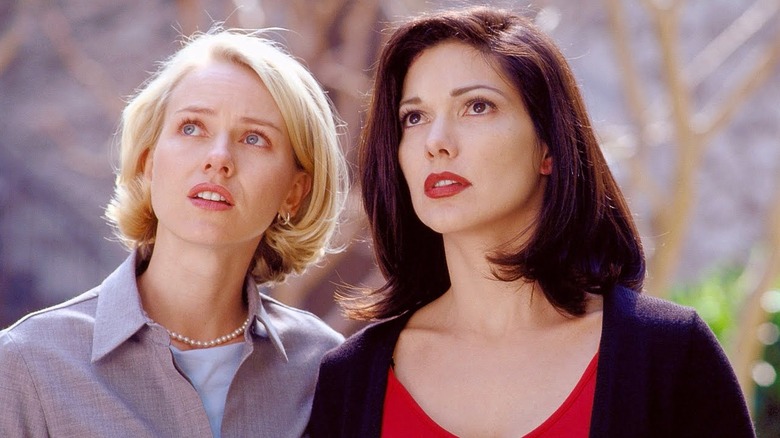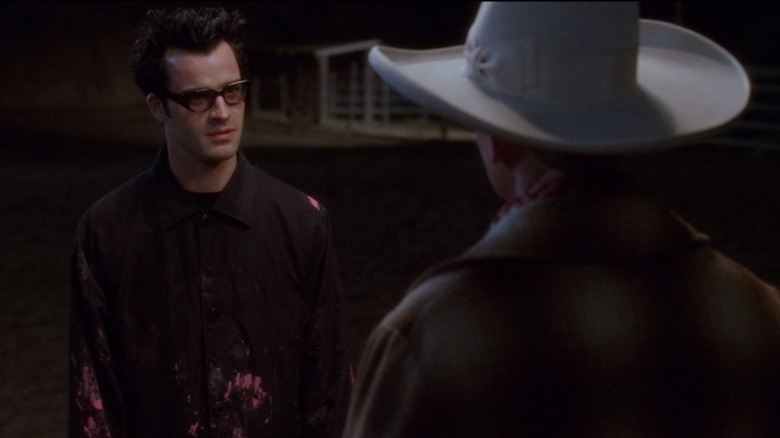
In January 2025, cinema lost one of its most unique voices when David Lynch passed away at the age of 78. What followed was a tremendous outpouring of love for the maverick director. Following it on social media, I noticed messages from friends who (to my knowledge at least) had never posted anything movie-related before. Lynch’s films were often categorized by twisted and disturbing visions, but, as a person and an artist, he really seemed to speak to people on a deep emotional level. Perhaps it was because he was never less than true to himself and represented an eccentric and generous spirit in a celebrity sphere increasingly full of phonies. Maybe it was because his dark reveries of weirdness lurking behind the facade of daily life cut through the tired old B.S. of the American Dream for so many. Whatever it was, everybody apparently just adored David Lynch, and one of the most glowing star tributes came from Naomi Watts, who worked with him on the film that is often regarded as his masterpiece: “Mulholland Drive.”
Lynch’s seductive neo-noir started out as a 90-minute pilot episode for a new TV series for ABC, but the network dropped it due to disagreements about its slow pacing, the confusing storyline, and concerns that Laura Harring and Naomi Watts were too old for their parts. Lynch was not budging, however, and Watts credits the filmmaker for putting her on the map after she spent much of the 1990s struggling to make an impact in Hollywood. Her role in “Mulholland Drive” became one of the most memorable characters in Lynch’s filmography, and she went on to receive two Oscar nominations (for “21 Grams” and “The Impossible”).
Getting dumped by ABC certainly didn’t hurt Lynch or the final movie any. After the filmmaker shot additional scenes with extra money from StudioCanal, “Mulholland Drive” did well on the international awards circuit, receiving a nomination for the Palme d’Or at Cannes (where Lynch won Best Director) and earning Lynch a directing nod at the Oscars. Since then, “Mulholland Drive” has established itself as one of the best films of the 21st Century, topping the BBC’s 2016 poll and jostling with the big guns in the 2012 edition of Sight & Sound’s once-in-a-decade rankings. Things went even better in the 2022 vote (where it moved up from #28 to #8), while “Mulholland Drive” came in second place in The New York Times’ 2025 poll of the 100 best films of the current century. Let’s take a closer look.
What happens in Mulholland Drive?
It is nighttime on Mulholland Drive, Los Angeles, and an elegant raven-haired woman (Laura Harring) narrowly averts getting murdered in the back of a limo thanks to a car wreck. The accident leaves her with amnesia, though, so she seeks refuge in an apartment. Enter Betty Elms (Naomi Watts), a bright-eyed wannabe actor from Ontario arriving in Los Angeles with dreams of becoming a star. Having been loaned her aunt’s apartment, Betty arrives there to find the dazed woman in the shower. Unable to remember who she is, the stranger takes the name Rita from a poster of “Gilda” and slips into femme fatale mode as she and Betty try to figure out what happened to her and why. The only clues they have to follow is a wad of cash and a mysterious blue key in Rita’s handbag.
Betty’s first audition goes superbly well, but parallel stories hint that something more sinister is at play: We meet a bungling hitman, a terrifying figure lurking behind a diner (one of the greatest jump scares in movie history), and Adam Kesher (Justin Theroux), a smug director who finds himself under pressure from some unsavory characters to cast an unknown actor in his film. When he refuses, a shadowy puppet master behind the scenes (Michael Anderson, who’s well-known to Lynch fans from “Twin Peaks”) threaten to ruin his life unless he gives into their demands. Betty and Rita’s investigations also take a darker turn when they discover the corpse of a young woman and a nocturnal visit to a strange theater reveals the box that matches Rita’s key. When they open it, everything changes and takes a far more tragic turn for Betty.
This is where the narrative of “Mulholland Drive” fractures as Betty becomes Diane. A struggling actor, Diane is jealous of her lover Camilla (Harring again), who has apparently used their relationship to further her own acting career. It’s a Lynch movie so much is left open to interpretation, but perhaps the most compelling take on the final 30 minutes of the film is that the preceding two hours was Diane’s dream version of Hollywood. I think some of Lynch’s detractors tend to write off his more surreal touches as weirdness for weirdness’s sake, but here the journey into a dream (or nightmare) state is crucial to the overall themes of “Mulholland Drive” and the devastating impact of its final scenes.
What is the meaning of Mulholland Drive?
At one point in “Mulholland Drive,” we catch a glimpse of a street sign for Sunset Boulevard. The two thoroughfares run roughly parallel to each other across Los Angeles, the former winding through the Hollywood Hills while Sunset passes through the heart of Tinseltown itself. David Lynch named “Sunset Boulevard” as one of his favorite films, and these connections are key to getting your head around what is going on here. In many ways, “Mulholland Drive” is Lynch’s homage to Billy Wilder’s classic noir.
Like the earlier film, Lynch portrays Hollywood as a seductive place that can reward those who make it big beyond their wildest dreams. But it is also capricious and cruel, a sinkhole capable of swallowing the hopes of those who aren’t so lucky and always hungry for the next big thing. Many have to compromise their ideals in order to make a go of it, like William Holden’s Joe in “Sunset” and Camilla in “Mulholland.” Joe ends up playing gigolo to a washed-up movie star, and it is implied that Camilla is sleeping her way to the top.
The dream version of Adam in “Mulholland” is also forced to compromise, but Lynch is more concerned with the toll Hollywood can take on women. Even those who reach stardom, like Norma Desmond in “Sunset,” are often cast aside for fresher faces once their youth fades. Correspondingly, the women in Lynch’s film are constantly switching identities, mirroring each other, and changing their appearance to serve whatever Hollywood wants them to be at any given moment. Once the box is opened and we see the “real” story, Lynch jolts us with a disturbing revelation about the film industry’s voracious nature every bit as sour as the ending of “Sunset Boulevard.”
“Mulholland Drive” holds a broken mirror to older tales of Hollywood Babylon while also playing like a greatest hits compilation of Lynch’s best moments. The film invites comparisons with the likes of “Blue Velvet,” “Twin Peaks,” and “Lost Highway,” hitting the sweet spot right between them; it touches upon familiar beats from the first two while offering a narrative that (for the most part) is easier to follow than the latter. This may be why the film is regarded as Lynch’s masterpiece, marrying his signature uncanniness with a story that hits home so powerfully on an emotional level.
Source link



